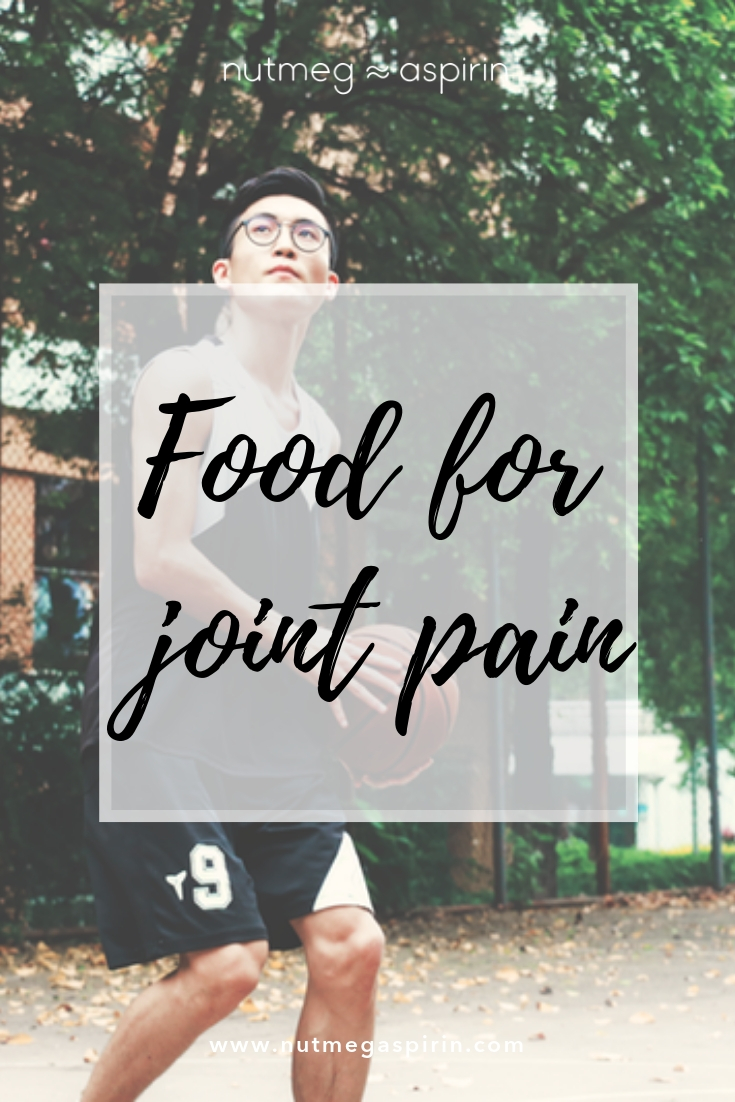The Functional Food for Joint Pain

How It Works
Whether you just have the occasional joint pain or a more chronic case of arthritis, there are certain foods that can help. One that has become more well known recently is GELATIN.
WHAT IS GELATIN EXACTLY?
Short and simple: gelatin is essentially 'cooked collagen'. In the natural process of making homemade bone broth you are focusing all your cooking energy on extracting the wondrous natural collagen, proline, glutamine and glycine from the bones and ligaments. You can see the gel-like characteristics of the cooked collagen (aka gelatin) when your homemade broth cools.
Collagen is our most abundant protein in the body, especially what’s known as type 1 collagen - which is found in our bones, muscles, skin, blood vessels, digestive system and tendons. Collagen is what helps give our skin youthfulness: strength, regeneration & elasticity. When it comes to our joints and tendons, collagen is like the glue that works to hold the body together.
As we age our natural collagen production does decline. It can decline even faster if we aren’t following a clean eating routine and if we neglect making time for holistic lifestyle practices that include your daily movement, stress management, proper hydration and adequate sleep. The rate at which our skin wrinkles and sags may be accelerated and our joints may become weaker due to a decrease in healthy cartilage.
If you feel like you’ve got a set of “skeleton legs”, which feel extra stiff and cause you pain when during movement - this can be a clear indicator for a loss of collagen. When we lose collagen, our tendons and ligaments are no longer moving with ease.
Move without pain by focusing on collagen! Add this healing complex protein to your routine, think of it as adding oil to a squeaky door hinge. Collagen works to help your joints move more easily and without the pain. Studies are even finding collagen to be an effective treatment method in osteoarthritis and other joint pain and disorders.
THE TYPES OF COLLAGEN
It’s important to know that there at least 16 different types of collagen found in the body. Of these different types, between 80 and 90 percent consist of types #1, 2, and 3. This is important to know, as different forms of collagen are found in certain foods and collagen supplements. Here's the breakdown of our top 3 most abundant forms of collagen:
- TYPE #1: Our most abundant by far, and considered the strongest. Type 1 forms tendons, ligaments, organs and skin. Type 1 also helps form bones and can be found within the GI tract. Essential in wound healing, strong healthy hair, and adding elasticity to the skin,
- TYPE #2: Primarily works to build cartilage and is also found in our connective tissues. Joint health relies on cartilage made of type 2 collagen. Researchers have found that supplementing with type 2 collagen helps patients with rheumatoid arthritis and osteoarthritis.
- TYPE #3: Makes up our organs and skin. Usually found with type 1 - it helps to give our skin elasticity and firmness. It also forms blood vessels and tissue within the heart.
Different sources of collagen will contain different types, here are our top sources and how they differ:
YOUR TOP SOURCES OF COLLAGEN
#1 BOVINE: Coming from cows and more specifically from their skin, bones and muscles. Bovine Collagen contains mostly types 1 and 3 collagen and additionally contains glycine and proline, which are useful in creatinine production, building muscle and also helping the body make its own collagen. Check out Bulletproofs Upgraded Bovine Collagen on Amazon.
#2 CHICKEN: This source provides type 2 collagen, which is best for building cartilage. Chicken collagen is beneficial for joint health, especially since this source also provides chondroitin sulfate and glucosamine sulfate. Check out Vital Proteins Organic, Free-Range Chicken Bone Broth Collagen.
#3 FISH: Providing mostly type 1 collagen, with the amino acids glycine, proline and hydroxyproline. Because type 1 collagen can be found throughout our entire body, consuming more fish collagen has been associated with benefits for the joints, skin, vital organs, blood vessels, digestion and bones. Check out Vital Proteins Marine Collagen Peptides
#4 EGG SHELL MEMBRANE: Found in the shells and whites of eggs, this source contains mostly type 1 collagen and also provides glucosamine sulfate, chondroitin sulfate, hyaluronic acid and various amino acids that benefit building connective tissue, wound healing, building muscle mass and reducing pain/stiffness. Check out Genuine Health's Fast Pain Relief Eggshell Membrane on Amazon.
COLLAGEN VS GELATIN SUPPLEMENTS
Collagen and gelatin are essentially the same, they have a mirrored amino acid and protein content profile - what makes them different is how they are to be used and how they are digested.
GELATIN POWDER has a gel-like consistency when prepared. You can use gelatin powder to make gut-healing gummies, gelatin-based desserts, jello and you can add it to your baking to create a chewy consistency (check out these lavender & lemon tigernut cookies, chewy matcha coconut cookies and my favourite paleo lemon squares). You’ve got to have a game plan when using gelatin, as pure gelatin powder will only dissolve in hot water and it will always create that gummy consistency. For someone who doesn't have strong digestion, gelatin is not the best suited option, as it can be troublesome to breakdown.
COLLAGEN POWDER goes by the name of hydrolyzed collagen or collagen hydrolysate are processed in a different way than gelatin. The collagen is heated to a higher temperature and is then treated with enzymes - which breaks the bonds between the amino acids. Collagen powders may be more easily broken down in the body, when compared to gelatin, and it is better for those with weaker or stressed digestion. Collagen powder can dissolve in both cold and hot liquids and it does not create a gel-like consistency. Scoring a 10/10 in my books for usability: the fact that you can add it to almost anything without introducing a new taste or texture makes this an easy to use product with so much positive potential.
Bone broth is your most natural collagen option and is also the easiest on digestion, check out this recipe to get on the homemade bone broth game.
BONUS HEALTH BENEFITS FOR COLLAGEN USE
GLOWING SKIN:Collagen might already be an ingredient in your skin care products but topical absorption for collagen is close to none- when you use collagen internally, this protein works to significantly repair and improve your skin elasticity and appearance. It bring back the youthfulness, and is also beneficial for reducing cellulite and stretch marks!
STRONG & THICK HAIR: As a personal story; I didn't know the effects of taking collagen were real for it’s beauty benefits until my friends, colleagues and hair stylist started making comments - asking what I was doing differently. I wasn't just 'seeing things' - my hair became so much stronger, has natural shine, less breakage and a fraction of the shedding with the inclusion of 2-4 tablespoons of Bulletproof Collagen daily.
HEALTHY NAILS: Do you have peeling and splitting nails? A lack of collagen could be to blame. Collagen protein is a building block needed for nail health and adding collagen to your routine can work to keep your nails strong!
BETTER DIGESTION: Beauty benefits are grand, but a behind the scenes benefit for collagen doesn’t include improving your skin, hair or nail health. Collagen works to repair and heal the gut lining, and is a powerful addition to a Leaky Gut Healing Protocol. If stress is the downfall in your digestion, where you can eat a single green bean and get bloated while under stress, first remember that digestion is not a prioritized function when you're in fight-or-flight mode. Take time to Recharge, and an addition of collagen to your day may work to decrease digestive inflammation and heal the gut lining.
EXERCISE RECOVERY: When you go on a longer distance run or for a weightlifting session, you are putting tremendous strain on the body - which naturally causes inflammation. Good inflammation, but the kind that leaves you with the 'two days after leg day' pain. Collagen works to promote a healthy inflammatory response by speeding up the repair of your damaged connective tissues. Adding just 2 tablespoons of collagen powder to water, coffee or herbal tea makes for a functional pre-workout go-to and with noticeable benefits in decreasing recovery time on harder training days.
Read the full article: https://www.holisticole.com/blog/joint-pain
What You’ll Need
Difficulty
nor hard Somewhat
challenging Very
challenging
Story
I have always been one to believe that it is possible for all of us to truly feel our very best - at any age or stage in life.
So when I hear people justify feeling “sore and stiffness with joint pain” as being a ‘normal’ part of the aging process, it really bothers me.
How you feel on a day-to-day basis and how you age, is an exact representation of how you’ve treated your body through your daily lifestyle choices.
Most people are taught to think this way about their bodies as they age. So it’s not entirely your fault if you believe this - there’s actually an error in the system.
There are substantial root causes as to why the body hardens and stiffens over time, and they really don’t have anything to do with aging. Here’s a look at what might really going on:
5 REASONS FOR YOUR STIFFNESS & PAIN
#1 TRAUMA: It’s common to blame the aging process on your aches and pains, but if you’ve injured yourself in the past, in many cases your current pain may actually be stemming from an old trauma that was not properly dealt with. With impact trauma an injury can be active in your body for years and can create enough stiffness to get your attention.
#2 REPRESSION: Studies actually show that pain can be both psychological or emotional in origin. In the act of repression, we use our own muscles to hold back our emotions - not all pain is purely physical in nature. Chronic pain could be linked to repressed psychological or emotional stress that is directly causing your muscle tension.
#3 STRESS: Pay attention to how your shoulders and neck tense up when you are put under pressure, and think about how we tend to be shallow breathers when stress levels are high. While our natural stress response is designed to help us respond when we are faced with a fear, whether the fear is actual or imaginary, one of the consequences is for your muscles to harden. If you’re not taking time to detox stress and Recharge, daily pain and stiffness can be a consequence.
#4 INACTIVITY: Movement is probably the most essential aspect in keeping your body feeling free and flexible. When we activate our muscles it makes our tissues warm and in a more fluid state. If we go days or weeks without making the time to exercise and move - we actually are creating stiffness. Neglecting daily exercise and movement has been shown speed up the aging process and additionally put you at risk for age-related disorders such as cardiovascular disease, type 2 diabetes, obesity and musculoskeletal disorders.
#5 CONTRACTIVE MOVEMENT: One thing that may just be worse than inactivity is taking part in the wrong kind of movements. Muscle stiffness after exercise is usually the result from low level micro-trauma or small tearing of the muscle fibres - caused by the stress factor of exercise. Not only is it important to ensure that you are performing exercises correctly, but it is also important to avoid over-training. More is not always better and you don’t need high-intensity workouts to see results. It’s important to balance out your lifestyle by including activity such as therapeutic yoga flows and core work such as pilates.
In addition to evaluating the true root cause for your pain and stiffness, there are also 'functional foods' that you can include in your daily routine that have a potential to provide many benefits; from decreasing inflammation, healing your joints and repairing damage.
Read the full article: https://www.holisticole.com/blog/joint-pain





